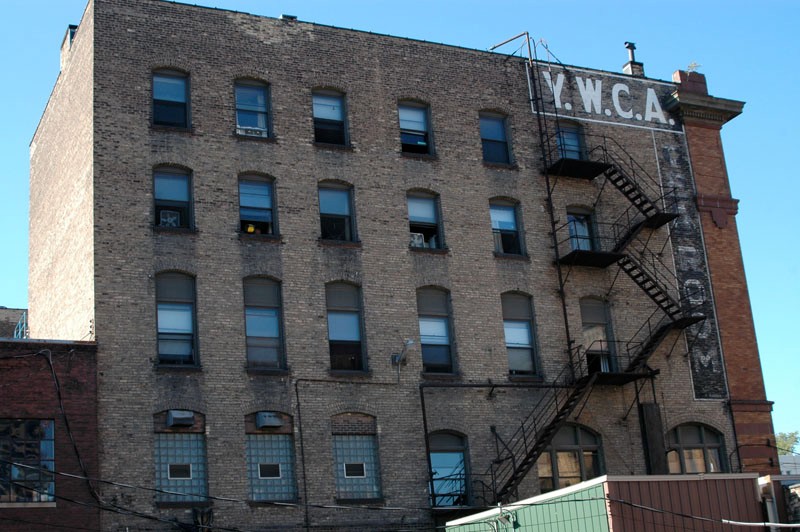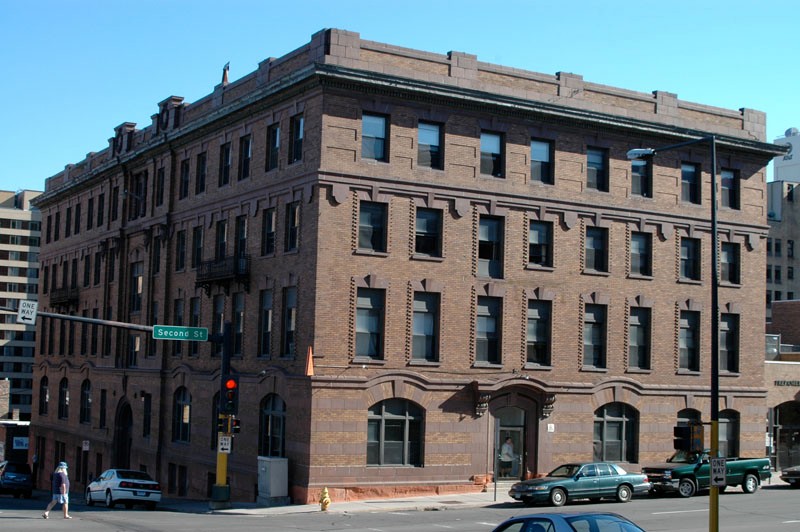YWCA of Duluth (Modern: American Indian Community Housing Organization)
Introduction
Text-to-speech Audio
Images
2006 photo of the rear part of the historic YWCA in Duluth

2006 photo of the historic YWCA in Duluth

Backstory and Context
Text-to-speech Audio
The four-story headquarters of the Young Women's Christian Association (YWCA) of Duluth opened in 1908. However, the group originated during the nineteenth century as part of America's broader progressive movement (and subsequent development of reform and settlement houses). The Duluth YWCA's goal involved improving living conditions for the poor in the community, as well as offering programs and activities for young, independent single women (especially foreign-born). The early YWCA philosophies enjoyed strong ties to Christian and Victorian-era principals. However, as the nation's cultural values changed, so did the YWCA's mission and goals. In looking at the YWCA history, one gets to peer into the broader cultural history of Duluth and the nation.
During the late nineteenth century, the number of immigrants flowing into the U.S. swelled, and many of them endured harsh working conditions and lived in crowded, often unsanitary portions of American cities. The most notorious settlement house was Jane Addams' Hull House in Chicago (founded in 1889). Although reformers created settlement houses to aid immigrants, the growing number of native-born working-class poor also benefited from the programs.
Simultaneously, there existed a growing population of educated, middle-class women whose Victorian upbringing molded their understanding of how society should function -- family, home, jobs, and more. While organizations provided food and clothes, assisted in job searches, taught English, and pushed local governments to improve sanitation and living standards, many historians have noted that it came with an attempt to push Victorian Middle-Class values onto women. For instance, immigrants and single women were taught "proper homemaking skills" like sewing and lace-making despite their inability to gain the financial means to stay at home. Indeed, the nation's wage-earning women grew from two million to nine million from 1870 to 1920.
Though the YWCA did not formally exist until the 1870s in England and 1906 in the United States, the organization's story goes back to 1844 with the inception of the Young Men's Christian Association (YMCA) founded in England as a response to the effects of the Industrial Revolution on the lives of the poor and working-class. Also in England, Emma Roberts and Elizabeth Kinnaird slowly developed the YWCA during the 1850s. Social and housing conditions in American cities for the poor, working-class (often immigrants) differed little from that of London. In 1858, Mrs. Marshall Roberts formed the Ladies Christian Association in New York City with thirty-five members followed by similar clubs in cities like Chicago and Boston; their mission was to assist young women (mainly poor and immigrant women) in procuring employment, providing housing, and instilling Christian values.
The founding of the Young Women's Christian Association of Duluth in 1893 as the city experienced a substantial population, economic, and construction boom tied to mining, milling, and transportation. Duluth’s population expanded from 2,200 in 1878 to 30,000 in 1887 (60% listed as foreign-born). That population boom and immigration trend continued into the first decade of the twentieth century. Services established by the YWCA included Bible study, citizenship classes, English lessons, employment assistance, meals, and physical fitness. Rather than employ resident social workers like genuine settlement houses, YWCA leaders usually consisted of wives of local businessmen who also served roles at their local church; religious education at the YWCA was paramount.
The YWCA felt it necessary to have sufficient properties to carry out its mission, and the Duluth building demonstrates that philosophy. By the early 1900s, the YWCA success included more significant economic support, which allowed them to build the now-historic building in 1908. Typical of most settlement and reform houses, people could easily access the Duluth YWCA from a nearby train station, churches, and the central business district. "Noon Rest" rooms provided hot lunches for workers on their midday breaks, which often came with religious instructions. The YWCA in Duluth served an average of 370 meals per day in 1909.
As noted in the National Registration Inventory Form, "The basement houses a gymnasium and swimming pool. The spacious ground floor lobby and reception area provided a homelike welcome complete with a fireplace and decorative millwork and plaster. The ground floor also offered meeting rooms, a cafeteria, and a tearoom. Upper floors provided seventy-five residential quarters." One would also have found a clinic, theater, and classrooms. In theory, the more a building offered, the more likely it would be for its members to spend their time at the YWCA; some argue that included an attempt to prevent single women from engaging in "sinful" activities. (Saloons outnumbered churches in Duluth by 2:1 in during the 1890s, and outnumbered schools by a 3:1 margin).
The changing nature of the YWCA during the twentieth century provides a window into the broader cultural changes. Women increasingly gained skills and attended Universities during the middle of the century, which afforded them vaster career opportunities (although those opportunities for immigrant women took longer to manifest). As a result, the YWCA shifted its mission to training and leadership for women from the 1920s to the 1950s. By the 1960s, the YWCA embraced feminism and anti-racism movements as they sought to empower women and fight for racial justice. Additionally, the YWCA gradually eliminated Christian edicts but instead focused on building character and developing confident women.
In 2008, the organization had far outgrown its original purpose of offering an all-encompassing social center. So, they sold the building to the American Indian Community Housing Organization, who renovated it to increase its apartment and creative spaces, as well as plenty of social services. The YWCA leases space in the building to use for child care services.
In conclusion, the YWCA history offers a glimpse into the broader U.S. cultural history. The religious and Victorian-Era principals of the YWCA around the turn of the century resembled many Progressive-Era movements; the spacial building design survives as a reminder of those early days. By the 1920s and 1930s -- the era of Prohibition -- Women's Christian Temperance Union held its meetings at the YWCA. By the 1940s, the Duluth YWCA actively assisted in the war effort, both in sending goods overseas and also helping women finding new roles in the workplace. After the war, women proved reluctant to give up their wartime jobs resulting in a debate among the Industrial Women's Club of the YWCA and the American Federation of Labor and Federated Trades Assembly. In 1965, the YWCA participated in several racial justice programs and supported women's rights; the group also formed the Human Rights Commission of Duluth. By 1970, the YWCA offered daycare for working women. And its current mission differs significantly from its 1890s ideas. It says: "YWCA Duluth is dedicated to the elimination of racism, empowering women and promoting peace, justice, freedom, and dignity for all." And that includes: "We believe all women and girls have the right to define themselves and their own lives as they see fit."
Sources
Crocker, Ruth Hutchinson. "The Settlements: Social Work, Culture, and Ideology in the Progressive Era." History of Education Quarterly 31, no. 2 (Summer, 1991): 253-60.
Kuchera, Steven. "Duluth's YWCA building has new mission." Duluth News-Tribune (Duluth). Jul 24, 2008. https://www.duluthnewstribune.com/news/2260605-duluths-ywca-building-has-new-mission
Lucas, Amy M. and Carole S. Zellie. "Nomination Form: Young Women’s Christian Association of Duluth (YWCA)." National Register of Historic Places. nps.gov. June 1, 2011.
Wiebe, Robert H. The Search For Order: 1877-1920. New York: Hill & Wang, 1967.
By Minnesota Local History & Historic Preservation - https://www.flickr.com/photos/minnesotalocalhistory/5842727872/, CC BY-SA 2.0, https://commons.wikimedia.org/w/index.php?curid=25842642
By Minnesota Local History & Historic Preservation - https://www.flickr.com/photos/minnesotalocalhistory/5842180451/, CC BY-SA 2.0, https://commons.wikimedia.org/w/index.php?curid=25842686
